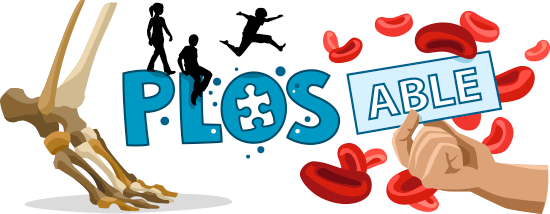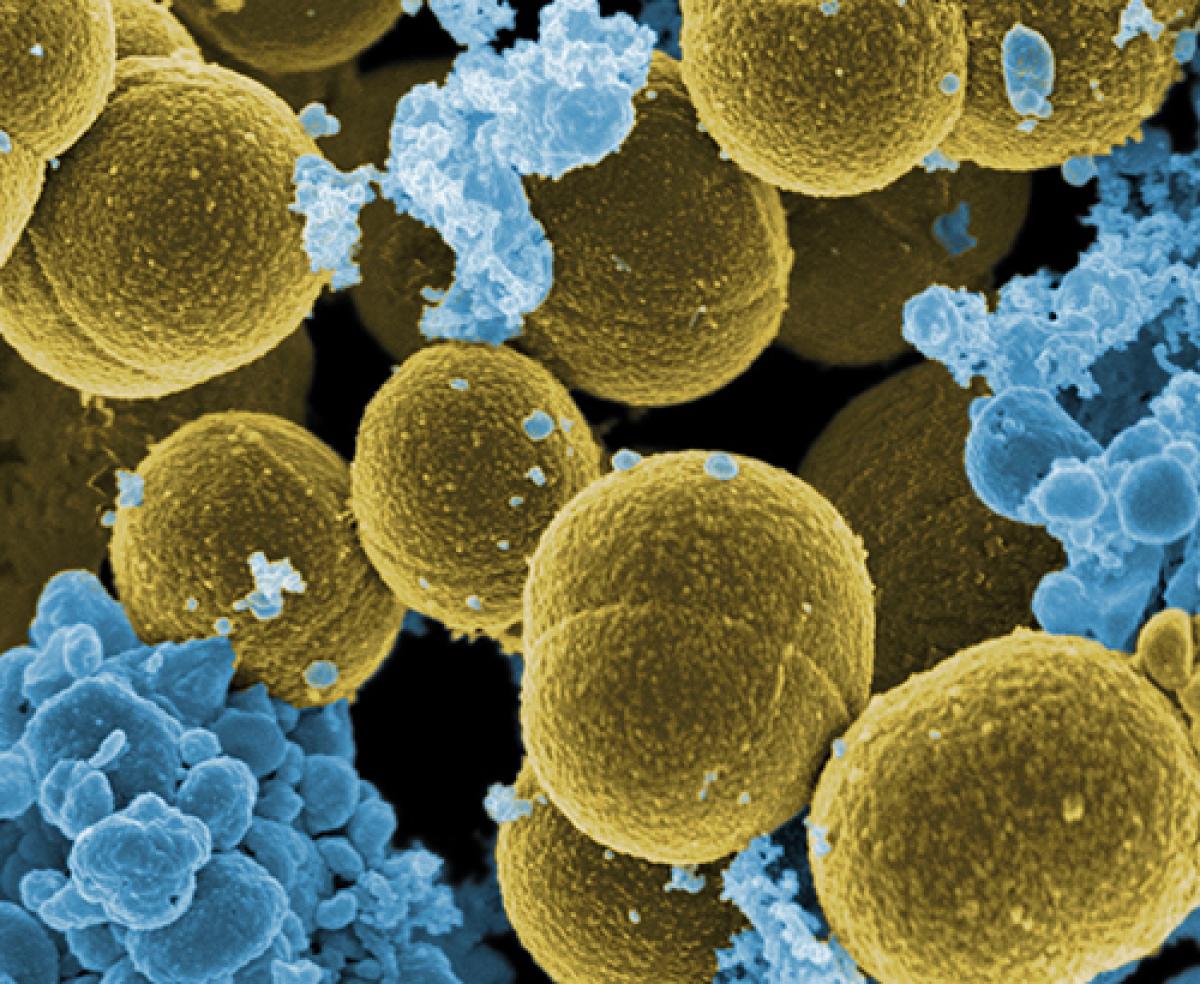
Feeding the Beast: How Germs Eat for You
What's in the Story?
You've probably never seen someone licking a door handle or doorknob. Just the thought of it may make you want to say "yuck!" Doorknobs can be touched by a lot of people each day. Because of this, they have many germs covering them. Running your tongue across their surface just about guarantees you will get sick.
But why? What could be living on those doorknobs? One thing might be bacteria. These microscopic, singe-celled organisms have a reputation for making people sick.

It turns out some bacteria are not as bad as people think. In the PLOS Biology article “The Evolution of Mutualism in Gut Microbiota Via Host Epithelial Selection,” scientists describe how your body can work with certain bacteria to help keep you healthy. This shows us that, if nothing else, not all bacteria are bad.
Bacteria Help You Eat
Around the world, people eat just about everything: from fruits to milk to bugs. You may think that your body does all of the work for you. Your teeth mash up the food, your stomach digests it, and your intestines absorb the nutrients. It may seem as straight forward as walking your dog down the street, but in reality it’s not. Scientists are discovering that if it weren’t for the help of bacteria living in your gut, there are many things that you wouldn’t be able to digest at all.
Your gut, also known as your gastrointestinal tract, is the tube in your body that carries food from your stomach to your intestines. Your gut is home to millions of species of bacteria. In fact, scientists estimate that there are 100 trillion bacterial cells in your body. That’s roughly ten times as many cells as the cells that make up your body.

Those bacteria help your body to break down big food molecules into useable fuel. The bacteria also produce vitamins and help protect the body from diseases. The whole population of bacteria in our bodies is called the human microbiota.
The relationship between you and your gut bacteria is symbiotic. This means that both you and the bacteria benefit. Your bacteria receive a safe home and plenty to eat, and in return they help you break down food to get the nutrients that you need to survive and grow.
Preventing a Rebellion
If there are so many bacteria in our bodies, what keeps them from turning against us? There are plenty of bacteria that eat our food and take up space without doing much for our bodies. Those bad bacteria are not usually harmful, but they do compete with the good bacteria for nutrients and room to grow.

Bacteria cling to the inner lining, or epithelium, of your gut so that the water and food moving through your body don’t wash them away. If the bad bacteria grow faster than the good bacteria, the bad bacteria will take up all of the space on the wall of your gut. This will make it so the good bacteria are washed away. So what keeps the good bacteria around, and the bad bacteria in check?
Virtual Bacteria
It’s difficult to watch what’s going on inside of our guts. It can also be hard to do experiments like this on humans. Because of this, scientists decided to use a computer to create a bunch of virtual guts filled with virtual bacteria, kind of like characters in a computer game.
As the virtual bacteria in the virtual guts grew, they covered the gut’s epithelium. The faster a species of bacteria grew, the more space it could claim on the epithelium. Once all of the space on the epithelium was claimed, the bacteria started to grow on top of each other. Eventually the dog-pile of bacteria got so thick that water moving through the gut washed away the cells on top.

One way that our bodies might help good bacteria out-compete the faster-growing bad bacteria is by producing special nutrients that only the good bacteria can use. To test this idea, the scientists made some of the virtual guts produce special nutrients that made the good bacteria grow faster. Then they let the virtual bacteria grow and compete, and watched what happened.
In most of the virtual guts, the bad bacteria grew faster and out-competed the good bacteria. But the scientists noticed that sometimes it was the good bacteria that won. If the gut epithelium produced special nutrients that favored the good bacteria, then the good bacteria had an advantage early in the competition.
The good bacteria would rush to cover as much of the epithelium as they could. Later on, the bad bacteria couldn’t push the good bacteria out of the way. It was like the game Monopoly: the good bacteria bought up most of the properties early in the game.
Keep Your Helpful Bacteria Happy!
Not all bacteria are bad for you. In fact, the bacteria in your body help keep you healthy and strong. Scientists are excited to learn more about our helpful bacteria, and how to help them win battles against bad bacteria.
Additional images from Wikimedia Commons via Mariana Ruiz Villarreal.
Bibliographic details:
- Article: Feeding the Beast: How Germs Eat for You
- Author(s): Nicholas Jakob
- Publisher: Arizona State University School of Life Sciences Ask A Biologist
- Site name: ASU - Ask A Biologist
- Date published: 22 Apr, 2014
- Date accessed:
- Link: https://askabiologist.asu.edu/plosable/gut-microbiota
APA Style
Nicholas Jakob. (Tue, 04/22/2014 - 10:10). Feeding the Beast: How Germs Eat for You. ASU - Ask A Biologist. Retrieved from https://askabiologist.asu.edu/plosable/gut-microbiota
Chicago Manual of Style
Nicholas Jakob. "Feeding the Beast: How Germs Eat for You". ASU - Ask A Biologist. 22 Apr 2014. https://askabiologist.asu.edu/plosable/gut-microbiota
Nicholas Jakob. "Feeding the Beast: How Germs Eat for You". ASU - Ask A Biologist. 22 Apr 2014. ASU - Ask A Biologist, Web. https://askabiologist.asu.edu/plosable/gut-microbiota
MLA 2017 Style

Be Part of
Ask A Biologist
By volunteering, or simply sending us feedback on the site. Scientists, teachers, writers, illustrators, and translators are all important to the program. If you are interested in helping with the website we have a Volunteers page to get the process started.
